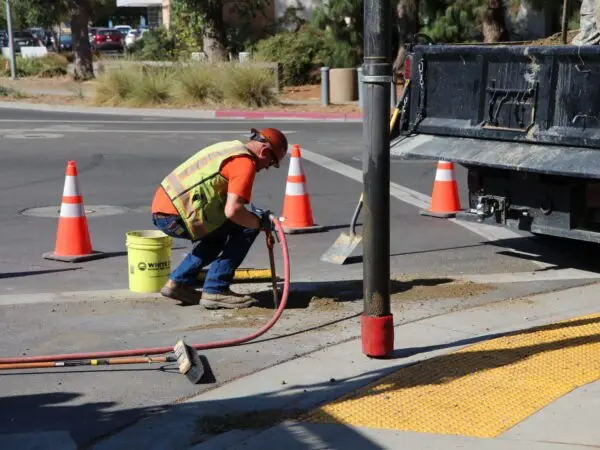In the intricate dance of construction planning, there’s a crucial step that often goes unnoticed but holds immense significance: potholing. This method, also known as vacuum excavation, isn’t just another item on the checklist – it’s a critical component that can spell the difference between project success and costly setbacks. Let’s delve into why potholing is an indispensable tool for ensuring the smooth execution of your next construction endeavor.
Potholing in Construction Projects: A Prudent Investment
 Potholing involves the careful excavation of the ground to expose underground utilities before any significant digging commences. While it might seem like an additional step, the benefits it brings to the table are invaluable. Here’s why incorporating potholing into your construction planning is a wise decision:
Potholing involves the careful excavation of the ground to expose underground utilities before any significant digging commences. While it might seem like an additional step, the benefits it brings to the table are invaluable. Here’s why incorporating potholing into your construction planning is a wise decision:
1. Prevent Costly Damages:
One of the most significant advantages of potholing is its ability to prevent costly damages to underground utilities. By accurately locating underground utilities and identifying buried infrastructure beforehand, construction teams can avoid accidental strikes during excavation. This proactive approach not only saves money on repair costs but also prevents project delays and potential safety hazards.
2. Enhance Safety Protocols:
Safety is paramount in the construction industry, and potholing plays a vital role in ensuring a secure work environment. By mapping out underground utilities with precision, construction teams can implement targeted safety measures to mitigate risks and prevent accidents on the job site. This commitment to safety not only protects workers but also fosters a culture of accountability and professionalism.
3. Optimize Project Efficiency:
Time is of the essence in construction, and any delay can have ripple effects on project timelines and budgets. Incorporating potholing into your construction planning allows for smoother project execution by minimizing the likelihood of setbacks due to utility damages. With a clear understanding of underground conditions, construction teams can streamline workflows, allocate resources efficiently, and stay on track to meet project deadlines.
4. Regulatory Compliance:
 In today’s regulatory landscape, adherence to safety standards is non-negotiable. Many jurisdictions have strict regulations in place to prevent utility damages during construction activities. By utilizing potholing techniques, you demonstrate compliance with these regulations and could mitigate the risk of legal liabilities and penalties associated with non-compliance.
In today’s regulatory landscape, adherence to safety standards is non-negotiable. Many jurisdictions have strict regulations in place to prevent utility damages during construction activities. By utilizing potholing techniques, you demonstrate compliance with these regulations and could mitigate the risk of legal liabilities and penalties associated with non-compliance.
Conclusion: Building on a Solid Foundation
As you embark on your next construction project, remember the importance of potholing. It’s not just about digging holes – it’s about laying the groundwork for a successful and safe endeavor.
By investing in potholing, you’re not only saving costs and enhancing efficiency but also prioritizing the well-being of your team and the integrity of your project. So, before you break ground, consider the critical role that potholing plays in shaping the success of your construction journey.

